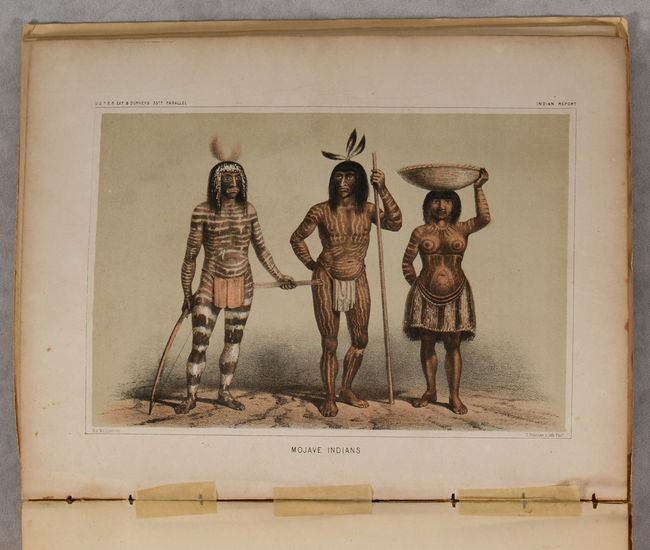Subject: Prints - Native American
Period: 1855 (published)
Publication:
Color: Printed Color
Size:
9.1 x 11.8 inches
23.1 x 30 cm
During the 1850s, the U.S. government sponsored an extensive series of expeditions designed to gather information on the vast new territories that had been acquired in western North America. The discovery of gold in California further stimulated westward traffic and heightened the need for a faster and more convenient way to bring the far-flung parts of the country together. In 1853 Congress commissioned the Army's Topographic Bureau to conduct a series of surveys to find a suitable route for a transcontinental railroad. There were six major expeditions; five of them covered the area between the Great Plains and west coast, and the sixth explored the coastal states of California and Oregon. All of these expeditions were accompanied by naturalists and artists to document the landscape, flora and fauna along the route.
The reports, maps and lithographs were published in the 13 volume report "Explorations and Surveys to ascertain the most practicable and economical route for a Railroad from the Mississippi river to the Pacific Ocean."
This disbound report is the third part of the third volume of the Pacific Railroad Surveys, covering the Indigenous tribes encountered by Lt. A. W. Whipple, Corps of Topographical Engineers, during his explorations along the 35th parallel. It features 42 illustrations, including 7 tinted lithographs, among them the famous Mojave Indians plate showing three heavily tattooed Indians, the Navajoes mounted on horseback with spears, and the lovely plate depicting the Zuni altar and ruins, all by H.B. Mollhausen, the expedition artist. The text provides interesting information on Indigenous traditions, dress, antiquities, art, language, and more, with the final two chapters covering the native population of New Mexico and the history of the Apaches and other tribes near the 35th parallel. 127 pages. Rebound in stiff paper wrappers.
References:
Condition:
The lithographs are in B to B+ condition, with light to moderate toning, some light foxing, and non-archival tape in the blank margins. The text block is cracked in a few places, with some pages coming loose. Contents overall are lightly toned and soiled. Disbound report has been rebound in stiff paper wrappers, with hinge reinforced with masking tape. Non-archival tape holds the binding together at various points throughout the text.





